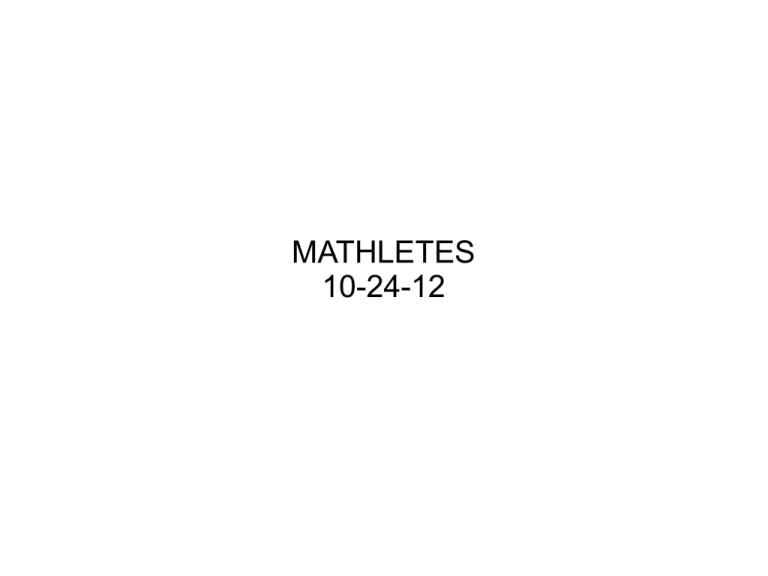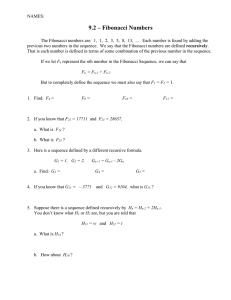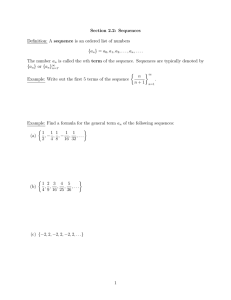MATHLETES 10-24-12
advertisement

MATHLETES 10-24-12 Fibonacci Numbers and “The Golden Ratio” Sequences A sequence of numbers can be any list of numbers 1, 2, 3, 4, 5, 6, 7, 8, 9, 10... 2, 3, 5, 7, 11, 13, 17, 19... 1, 4, 9, 16, 25, 36, 49, 64... Often, we are interested in sequences with some kind of pattern or rule Examples of sequences What rules or patterns do you see from the following sequences? 3, 9, 15, 21, 27, 33... 1, 3, 9, 27, 81, 243, 729... Examples of sequences 3, 9, 15, 21, 27, 33... Add 6 to the previous number Sn = Sn-1 + 6 Examples of sequences 1, 3, 9, 27, 81, 243... Multiply the previous number by 3 Sn = 3*Sn-1 The Fibonacci Sequence Start with the numbers 1 and 1, and apply the following rule: Sn = Sn-1 + Sn-2 In other words, the next term is found from adding up the previous 2 numbers The First Few Fibonacci Numbers 1, 1, 2, 3, 5, 8, 13, 21, 34, 55, 89... It goes on forever! A few things to note: Has both even and odd numbers Has both prime and composite numbers What other properties might this sequence have? Can you start with different numbers? Of course! 4, -3, 1, -2, -1, -3, -4, -7, -11... 1, 6, 7, 13, 20, 33, 53, 86... 0, 0, 0, 0, 0... It turns out they all have similar properties (except the silly 0,0,0... case) The Constant Quotient 1, 1, 2, 3, 5, 8, 13, 21, 34, 55, 89... Observe the following: 5/3 = 1.6666... 8/5 = 1.6 13/8 = 1.625 21/13 ≈ 1.6154 34/21 ≈ 1.6190 55/34 ≈ 1.6176 As we take quotients of consecutive terms, they get closer and closer to some particular number. The Constant Quotient 1+ 5 φ= 1.618034 2 It also satisfies the following equations: 1 1 1 φ ≈ 1.618034 The most “aesthetically pleasing” rectangle has a length to width ratio of φ:1 Fibonacci Numbers and the Golden Ratio in art and nature The Parthenon in Greece Fibonacci Numbers and the Golden Ratio in art and nature Count the number of spirals in the sunflower Stars! (At least their drawings) A Formula connecting the Golden Ratio to the Fibonacci Sequence φ 1 φ Sn = 5 n S1 = 1, S2 = 1, S3 = 2, S4 = 3... n




